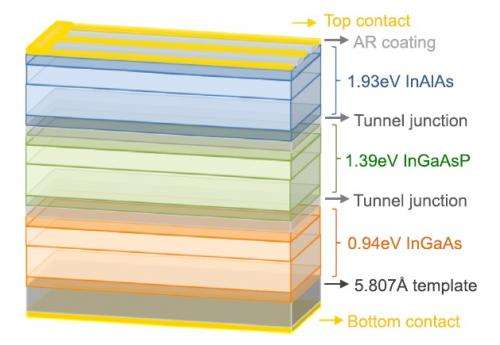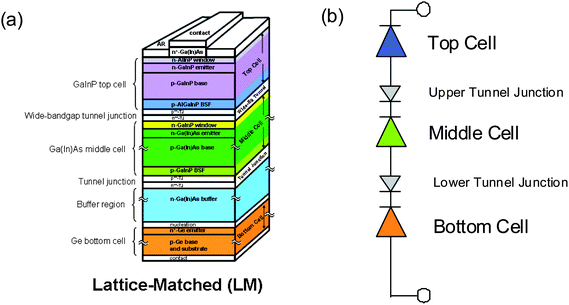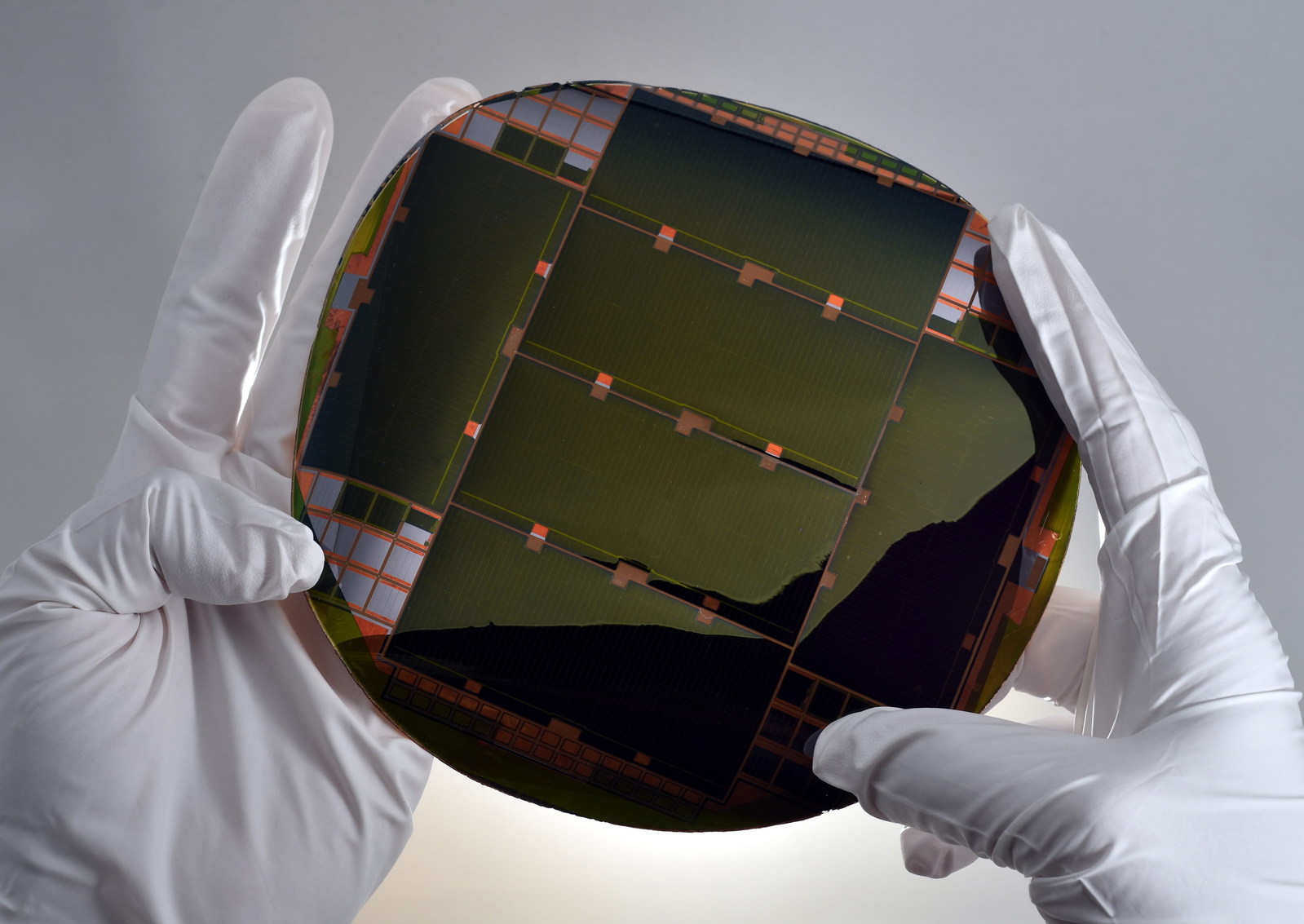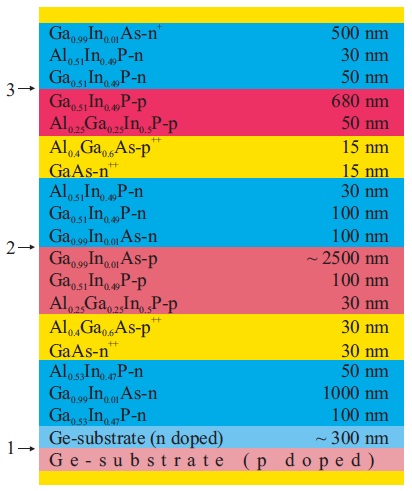Multi junction mj solar cells are solar cells with multiple p n junctions made of different semiconductor materials each material s p n junction will produce electric current in response to different wavelengths of light the use of multiple semiconducting materials allows the absorbance of a broader range of wavelengths improving the cell s sunlight to electrical energy conversion efficiency.
Multijunction solar cell substrate.
The maximum theoretical efficiency that a single bandgap solar cell can achieve with non concentrated sunlight is about 33 5 primarily because of.
A central stage in the development of economic solutions for the industrial use of multi junction solar cells for power generation has been reached.
The thin epi layer is transferred to the polyimide wafer.
And a sequence of subcells grown over the substrate with the first grown subcell either being lattice matched or.
The polyimide substrate has the advantage of thermal dimensional stability at high temperatures.
The strength of the bond will be characterized.
The polyimide substrate serves as a permanent lightweight and flexible carrier for the thin multijunction solar cell for space applications.
Multijunction solar cells on bulk gesi substrate mar 13 2020 solaero technologies corp.
A solar cell comprising a bulk germanium silicon growth substrate.
A diffused photoactive junction in the germanium silicon substrate.









